Morris Hawkins collection
By Lynn Meyers, Original Materials Librarian, Queensland Memory | 12 April 2017

Private Morris Hawkins, ca. 1916. Source: Image supplied by Hawkins family
Lance Corporal Morris Hawkins from Bogantungan in Central Queensland, served with the 47th Infantry Battalion in France and was captured by the Germans in April 1918. He was held as a prisoner of war in Northern France until the end of hostilities, and after returning to England, travelled extensively in Canada and America before returning to Australia.
The collection includes postcards, correspondence, diaries, photographs, a First World War training notebook, as well as a Black Watch tartan cap which was given to Morris by a Scottish soldier friend.
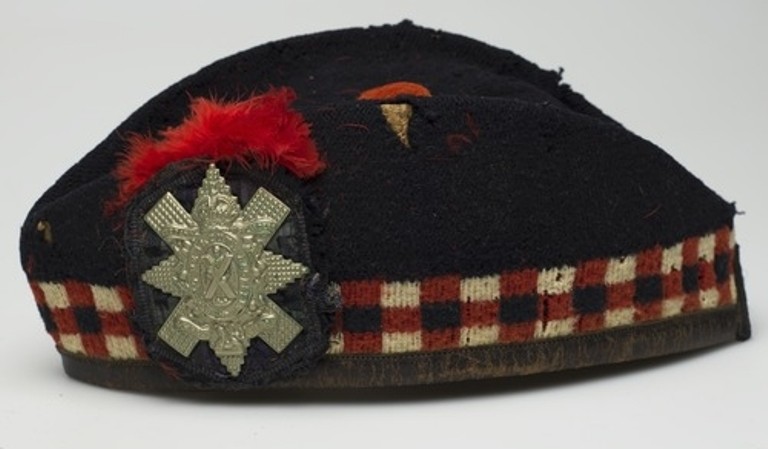
Black Watch cap. Source: Item 242, 30692, Morris Hawkins collection, State Library of Queensland
Morris Hawkins was born in 1884 at Pine Hill, Queensland, the son of Morris Hawkins (1840-1916), a station manager in Central Queensland, and Mary Elizabeth, nee Ellis. The couple had twelve children, with three of the sons serving in the First World War.
At the beginning of the war Thomas James Hawkins (Tom) travelled to England to join King Edward's Horse which was a cavalry regiment of the British Army. Charles Joseph Cornish Hawkins (Charlie) enlisted in 1916 and served with the 4th Machine Gun Battalion. Charlie was wounded in action in October 1917 with a gunshot wound to the right arm and was returned to Australia as medically unfit in April 1918. Tom Hawkins served in France and was seriously wounded.
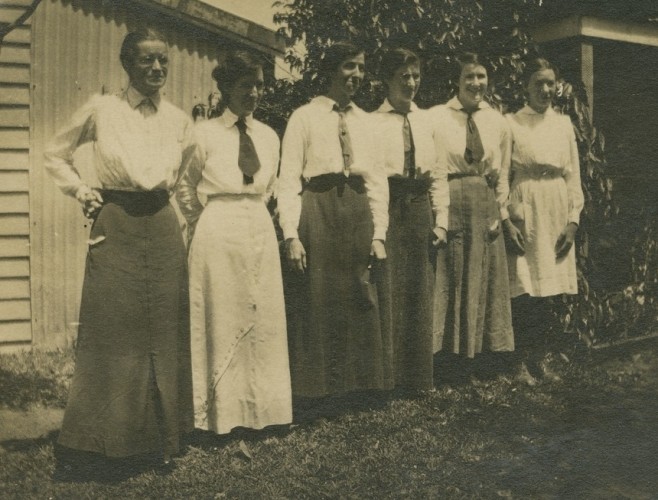
Daughters of the Hawkins family of Bogantungan, Queensland, ca. 1915. Source: Item 167, 30929, Morris Hawkins collection, State Library of Queensland
Daughters of the Hawkins family of Bogantungan, Queensland, ca. 1915. Source: Morris Hawkins Collection, Acc: 30629, Item 167.
Morris was a 32 year old grazier, managing the family property “Mowbray Station” in Bogantungan, when he enlisted on the 16 June 1916. He was assigned as a private in the 47th Infantry Battalion and trained at Fraser’s Paddock Camp in Enoggera, Brisbane. Due to his natural aptitude he was chosen to attend a school for corporals before he became seriously ill with measles and influenza. Morris was sent to the coastal town of Southport to recuperate, before embarking on the HMAT Demosthenes from Sydney on the 22nd December 1916.
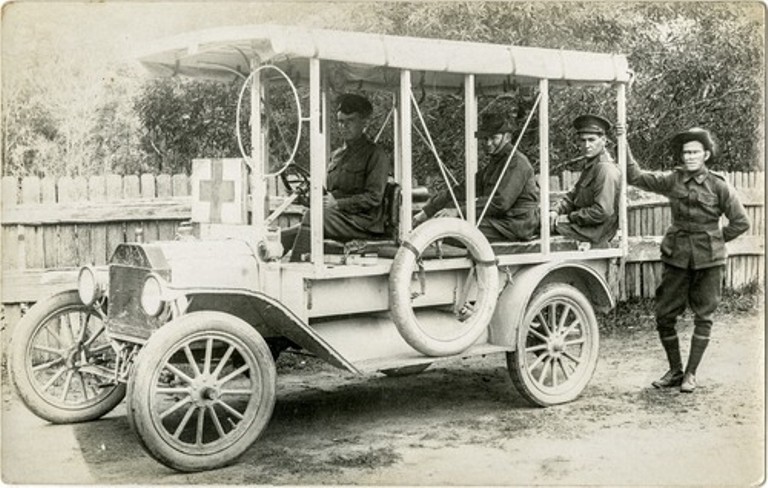
Morris Hawkins seated (far right) in a military hospital transport vehicle at Southport, Queensland. Source: Item 181, 30929, Morris Hawkins collection, State Library of Queensland
After arrival in England Morris trained at Codford Camp on the Salisbury Plain in Wiltshire. As a crack shot he was sent to the Musketry School in Tidworth to be trained as an artillery instructor and was appointed Acting Lance Corporal on the 29th May 1917. Shortly after he joined his unit on the Western Front and was promoted to Lance Corporal in December of that year.
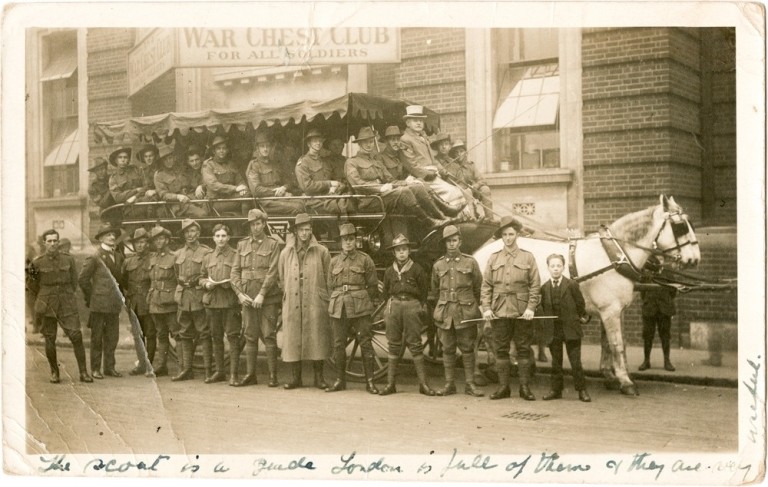
Australian soldiers ready to depart on a sight-seeing tour through London, 1917. Source: Item 85, 30629, Morris Hawkins collection, State Library of Queensland.
On 5 April 1918 he was reported missing in action and it was later determined that he had been captured by the Germans and was a prisoner of war. Morris was held in a German prisoner of war camp in Valenciennes in Northern France where he endured horrendous conditions. He wrote in his memoirs, which were published in 1962, and which have also been digitised:
Three hundred and sixty of us were brought to this camp, but at our weekly weigh-in, in 42 days the number was reduced to 80. It was a case of survival of the fittest. From thirteen stone or over when captured I had dropped to a few pounds over 9 stone. Just starvation but the Germans said we were weaklings and couldn’t stand the hardships of war. (Memoirs of Morris Hawkins, p.45)
After the Armistice Morris made his way to England, arriving at the end of November 1918. After visiting relatives and friends he travelled extensively in Canada and America.
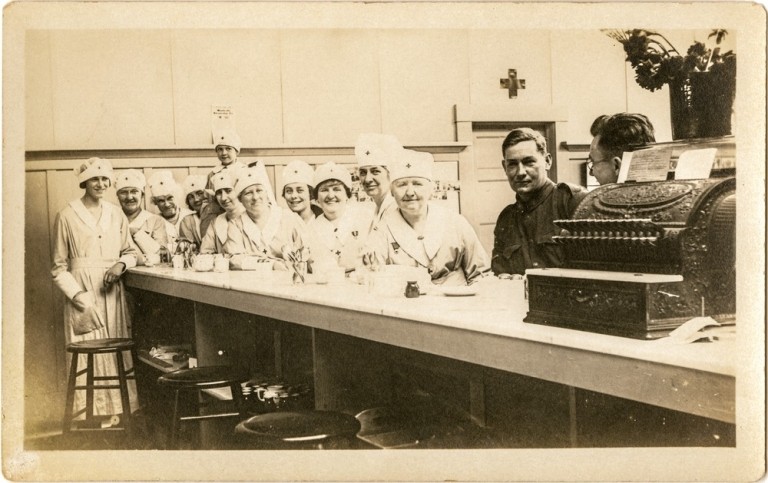
Morris Hawkins (2nd from right) with Red Cross canteen workers in San Francisco, California, 1919. Source: Item 194, 30629, Morris Hawkins collection, John Oxley Library, State Library of Queensland
Morris returned to Australia on the S.S. Ventura, arriving home on the 29 April 1919. Also on the ship was Miss Amy Castles, a well-known Australian opera singer, who was attached to the Vienna Opera House before the war.
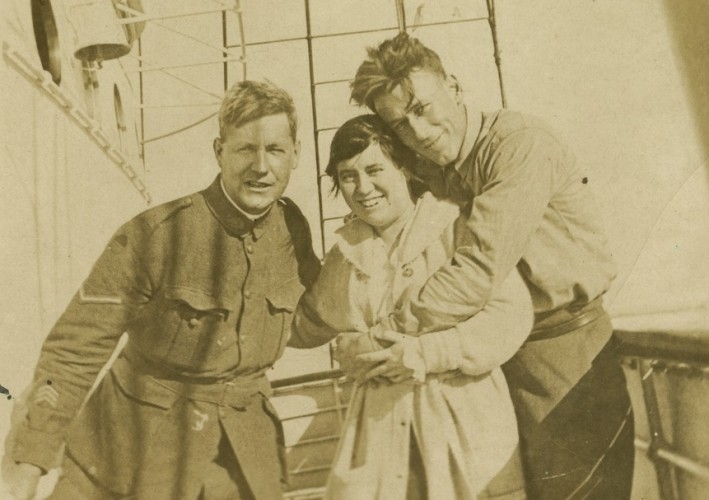
"Wild Times" on the S.S. Ventura. Morris Hawkins (left) with Miss Amy Castles and Private Martin Victor Rolfe, April 1919. Source: Item 218, 30629, Morris Hawkins collection, State Library of Queensland.
Morris eventually returned to Mowbray Station and in 1921 married his sweetheart, Aube Kathleen Jessie Donaldson, who lived on the adjoining property. The couple had four children. Morris Hawkins died on the 6th January 1970.

Aube Kathleen Jessie Donaldson, future wife of Morris Hawkins, 1918. Source: Item 216, 30629, Morris Hawkins collection, State Library of Queensland.
We are very fortunate that Morris was such an engaging and talented writer and that he has provided us with this insightful and moving account of his experiences during the war, in his letters, diaries and his memoirs.
Morris Hawkins collection may be viewed at the John Oxley Library or online.
Read more ...
- 30629, Morris Hawkins collection, State Library of Queensland
- Service record: HAWKINS, Morris
- Embarkation roll: 47th Infantry Battalion
- Red Cross Wounded and Missing Files: 3242 Private Hawkins, Morris
- Memoirs of Morris Hawkins, held by the Australian War Memorial
Comments
Your email address will not be published.
We welcome relevant, respectful comments.